Make a donation to the museum
Return to Sender: Tracing the Itinerary of Recovered Mail at Ground Zero
Return to Sender: Tracing the Itinerary of Recovered Mail at Ground Zero

A year following the Sept. 11, 2001 attacks, Joseph Pellegrini, vice president of business operations for The Options Clearing Corporation (OCC), received a Brink’s U.S Global Services envelope recovered from Ground Zero. In 2001, the OCC used Brink’s to send correspondence back and forth between the company’s headquarters in Chicago and its New York office at 17 State Street.
This finely dusted plastic envelope contains a shipping label with the origin of the package (“CHI”) and its destination (“NYC”) along with the addresses, office phone numbers, weight, value and shipping date typed in faint black lettering. This envelope, which had been slated to arrive in New York on the morning of Sept. 11, 2001, tells the story of that day, beginning with its submittal to the care of 9/11 victim, Francis Joseph Trombino, a security guard and messenger for Brink’s Incorporated.
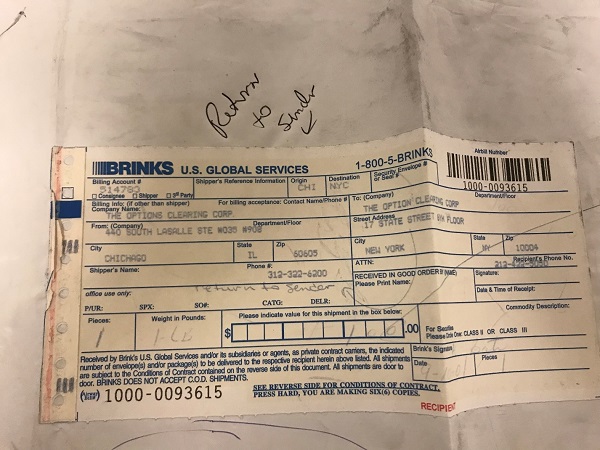
Joe Trombino typically left his Clifton, N.J., home by 3:30 a.m. to begin his 5:00 a.m. shift at the Brink’s base of operations in Brooklyn. Every day, Trombino and his colleagues made a routine stop at the World Trade Center. As his colleagues made deliveries inside the building, he would guard the armored truck.
Afterward, Trombino continued his shift by making on-foot deliveries and pickups around Wall Street. The OCC office was among his daily stops. After 10–12 years of deliveries, Trombino became well-known around the OCC’s New York office. He was often invited to stay for coffee and a chat, and it wasn’t uncommon to hear a someone exclaim, “Hey, Joe’s here!”
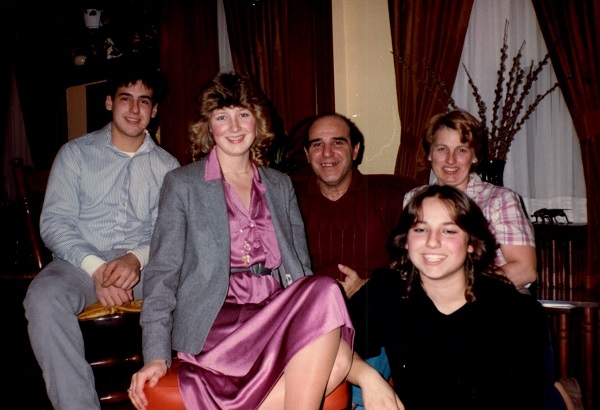
On the morning of 9/11, Trombino was guarding the armored truck in the parking garage of the North Tower as his three colleagues made a delivery on the 11th floor. As the attacks unfolded, Trombino placed a series of calls to Brink’s. One call expressed concern for his fellow colleagues inside the building and another reported that a police officer wanted him to move the truck, due to the building’s instability. Trombino communicated that the building was shaking and water was cascading down into the garage before the call disconnected. Trombino, who was killed when the North Tower collapsed, was the only causality that Brink’s suffered that day.

The arduous recovery work at Ground Zero would eventually lead to the uncovering of the Brink’s U.S. Global Services package. Although the specifics of its discovery remain unknown, on the plastic packaging in black pen, its handler wrote: “return to sender | this is material that was | recovered from the | World Trade Center bombing.”
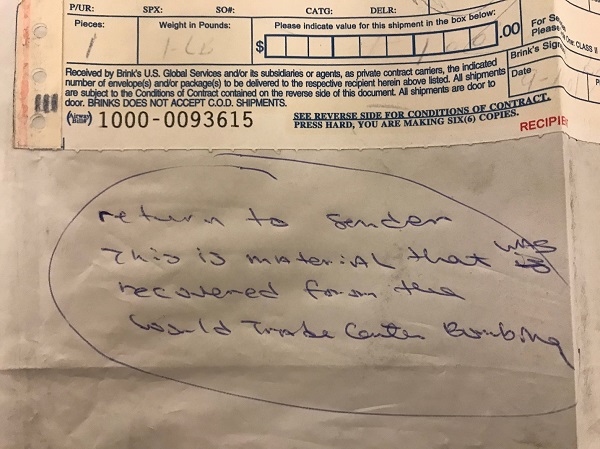
Upon receiving and opening the package for the first time a year after its sealing, Pellegrini recalled the distinct smell of acrid smolder it released and that the package’s contents—contracts and other day-to-day documents—were still completely intact. In 2005, the OCC closed their New York office and Pellegrini relocated to Dallas, Texas. The envelope, its contents now long removed, made the trip with him. It resided in his desk until 2018, when Pellegrini donated the envelope to the 9/11 Memorial Museum.
Anyone interested in donating materials in memory of a loved one—objects, photographs or audio remembrances—is encouraged to contact collections@911memorial.org.
By Christina Chavez, Curatorial and Collections Research Assistant, 9/11 Memorial Museum
Previous Post
Remembering John Vigiano Sr., Retired FDNY Captain
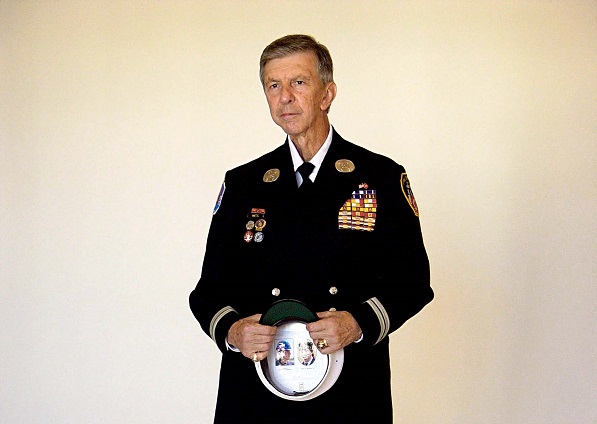
Today we pay tribute to John Vigiano Sr., a retired FDNY captain whose two sons followed him into service and were killed on 9/11. John Vigiano Sr. died this weekend after a battle with cancer.
Next Post
Reflecting on the World Cup and the Emotional Significance of Sports
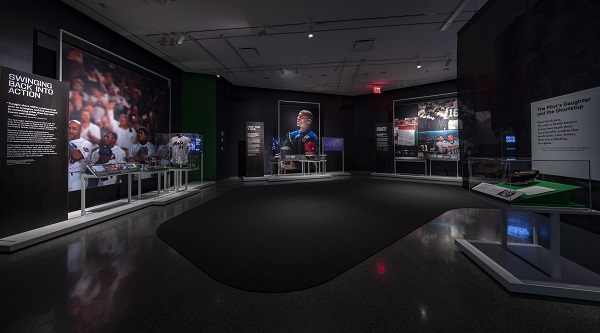
The emotional effects of sports are multi-pronged. They course through every society and country, and can be unifying, particularly in times of crisis and upheaval. As ESPN staff writer Tommy Tomlinson observed, “This is the blessing of sports. They help you remember when you want to remember, and they help you forget when you need to forget. They heal us an inning at a time, quarter after quarter, play by play.”